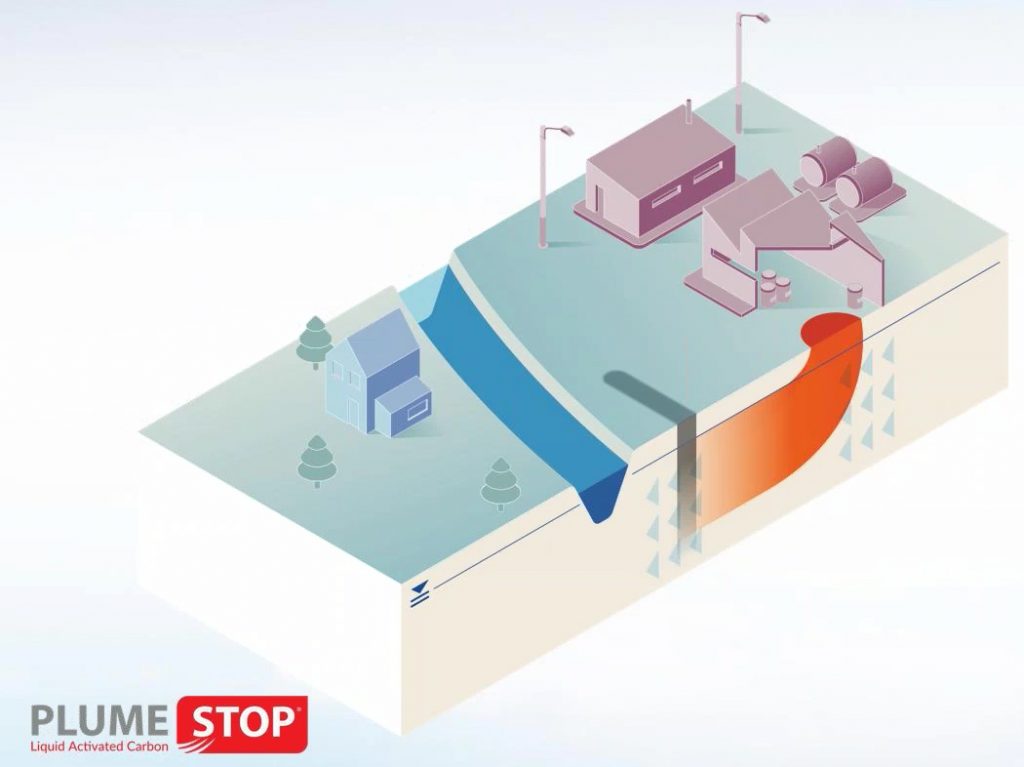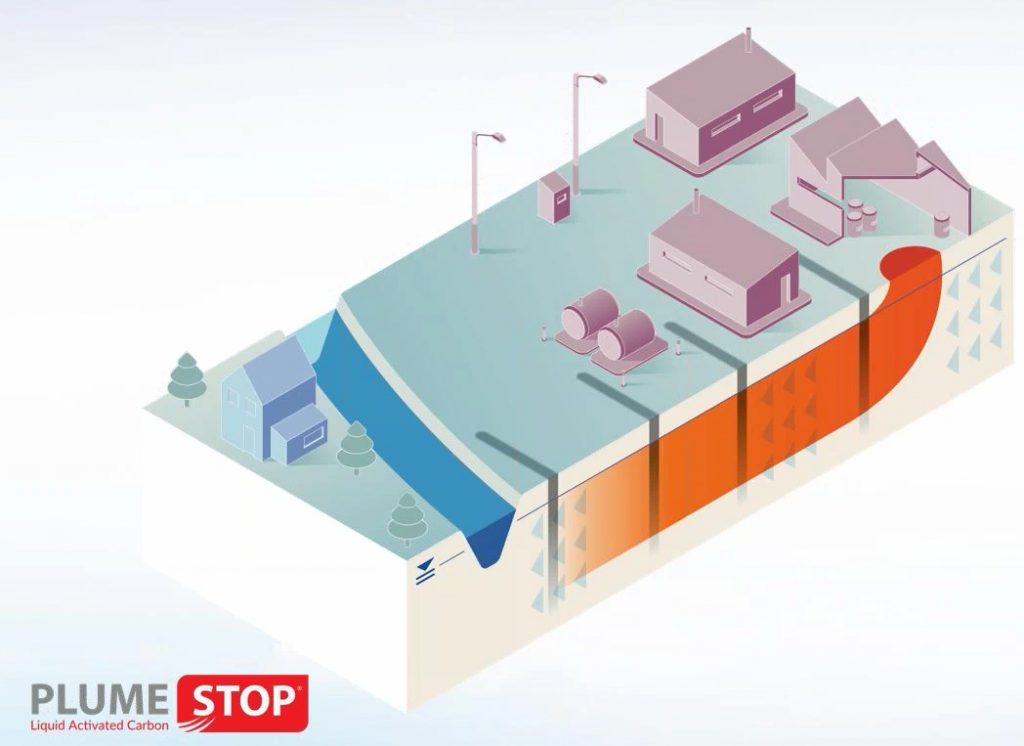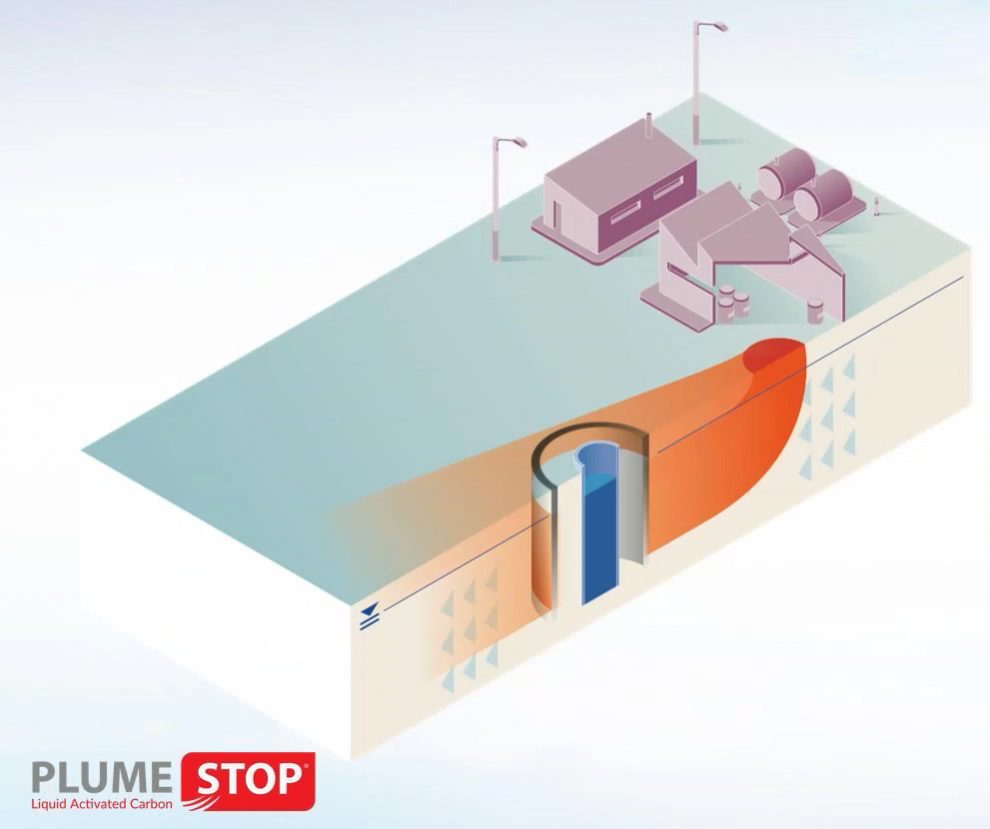Groundwater remediation strategies
With PlumeStop, remediation professionals gain a solution that will provide an effective, more economical means of stopping the migration of plumes, thereby protecting sensitive receptors. There are many possible strategies for the in situ remediation of organic contaminants using PlumeStop. Here are some examples:
Strategy #1: Simple Plume Cut-Off Barrier

In this application, a single barrier of PlumeStop can be applied to limit plume expansion. The purpose of the application is to protect a property boundary from a plume entering or exiting a site. It can also protect receptors such as a well or water body and minimize the plume in order to contain liability.
Strategy #2: Sequence of Barriers

PlumeStop can also be injected as a sequence of multiple barriers designed to progressively eliminate the plume. The benefits of this approach are that it addresses the entire plume and is particularly suited for large plumes and built up areas with restricted access.
Strategy #3: Localized Receptor Protection

Because some organic plumes (especially PFAS) can be extremely large and dilute, remediation professionals will likely need to turn to interim measures, like this one, to protect local receptors. Acting like a “Brita®” filter in the ground, the PlumeStop can be injected around extraction wells to protect them in the event that an entire plume cannot be quickly contained.


 Americas
Americas Europe
Europe Français
Français Deutsch
Deutsch Italiano
Italiano Español
Español
